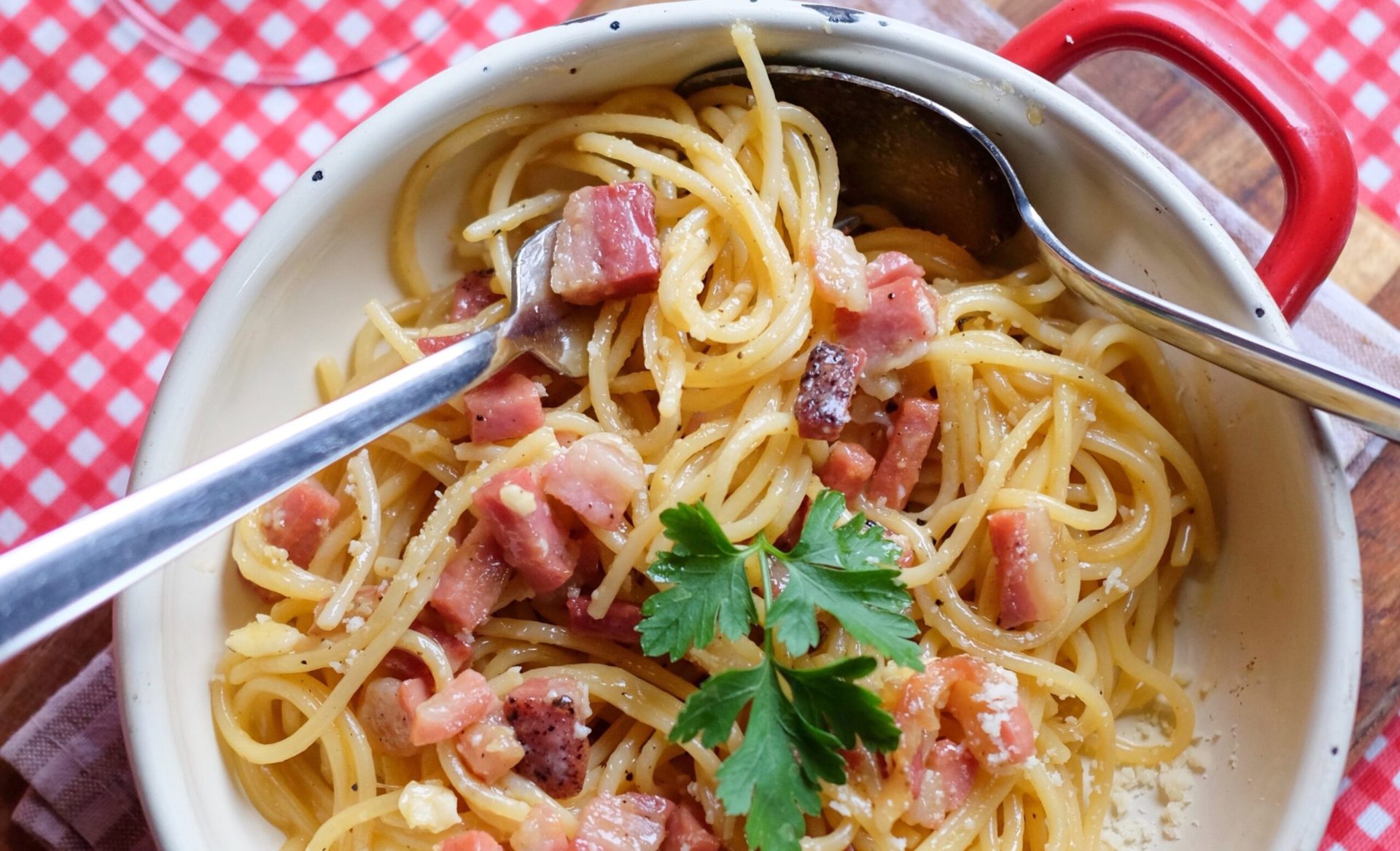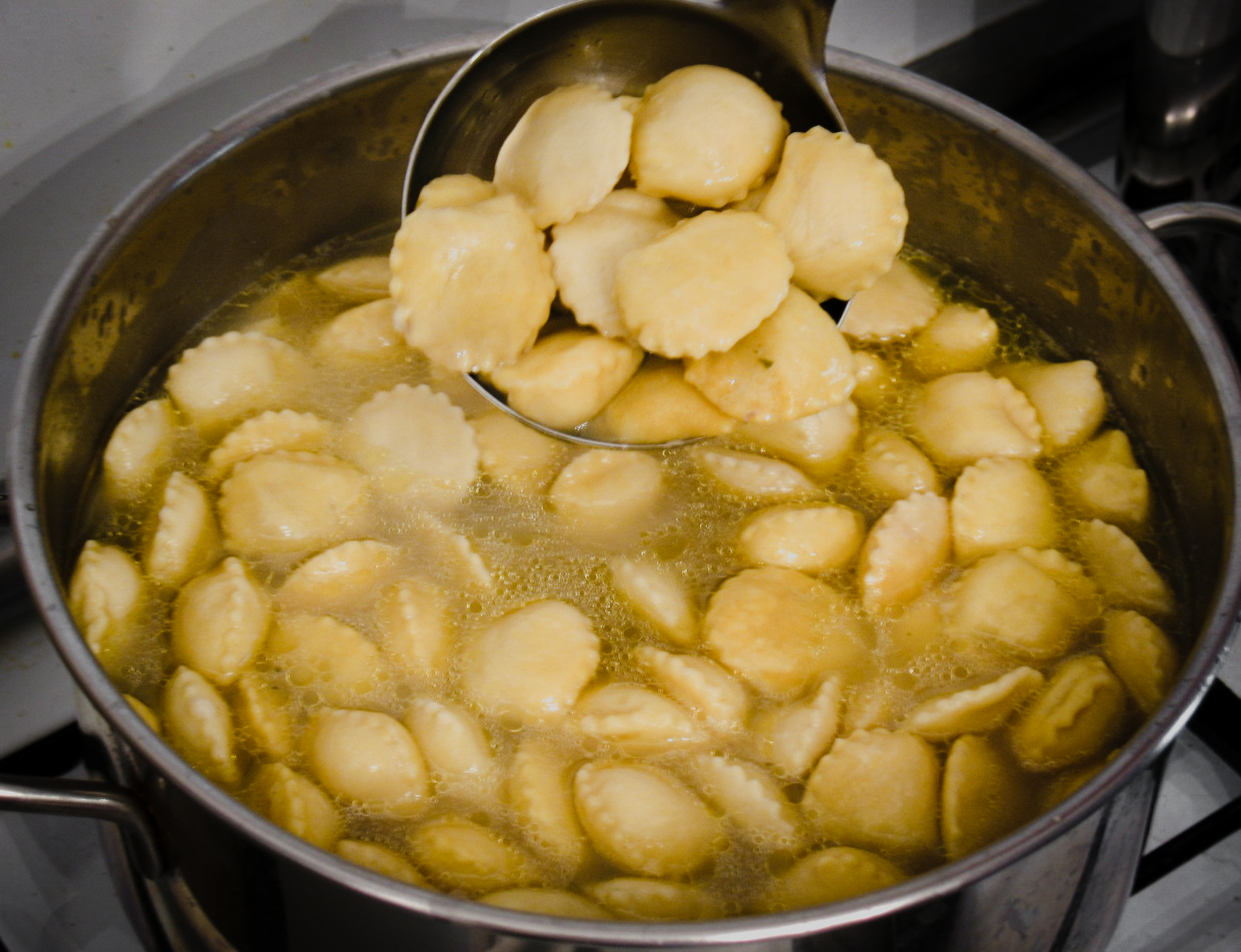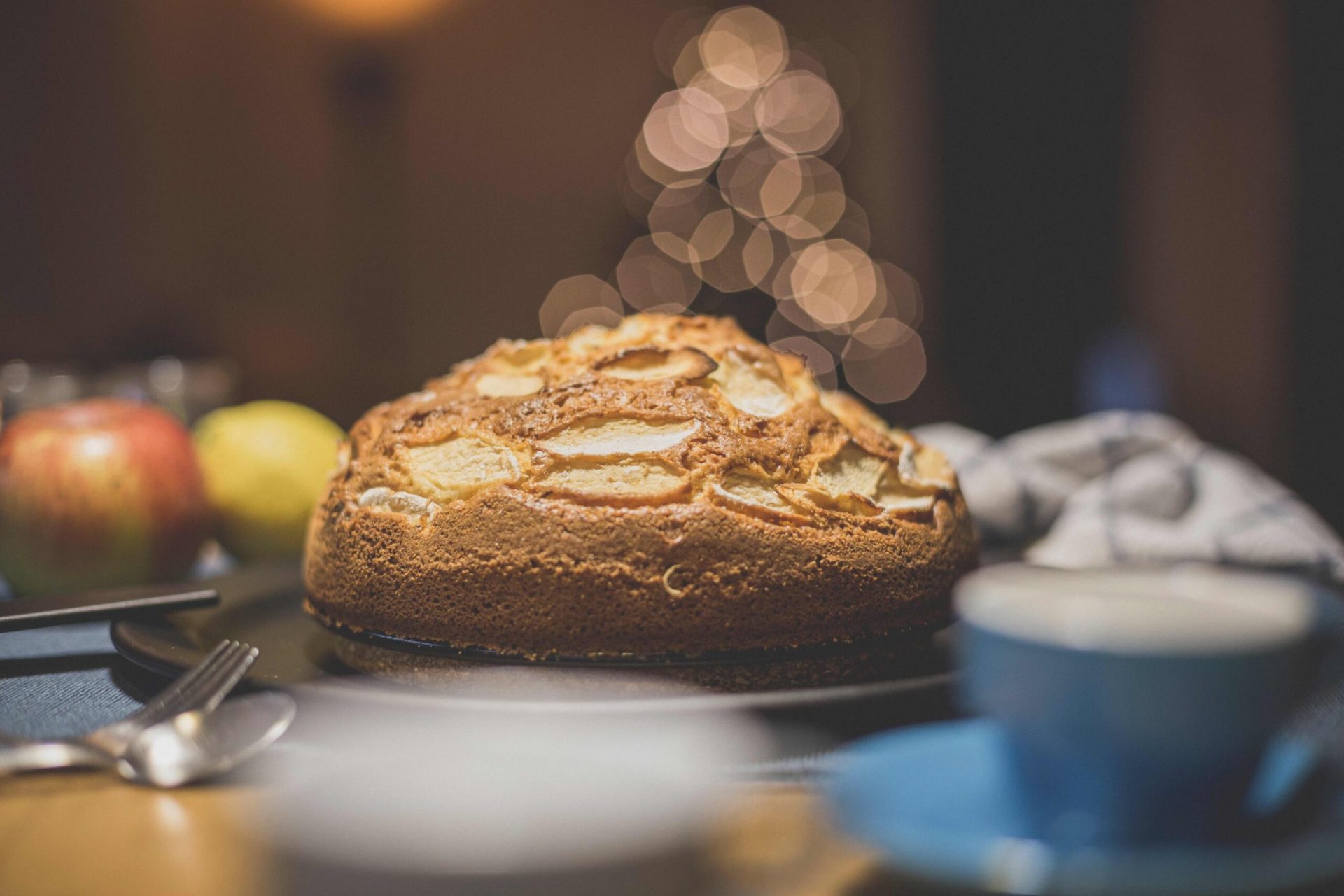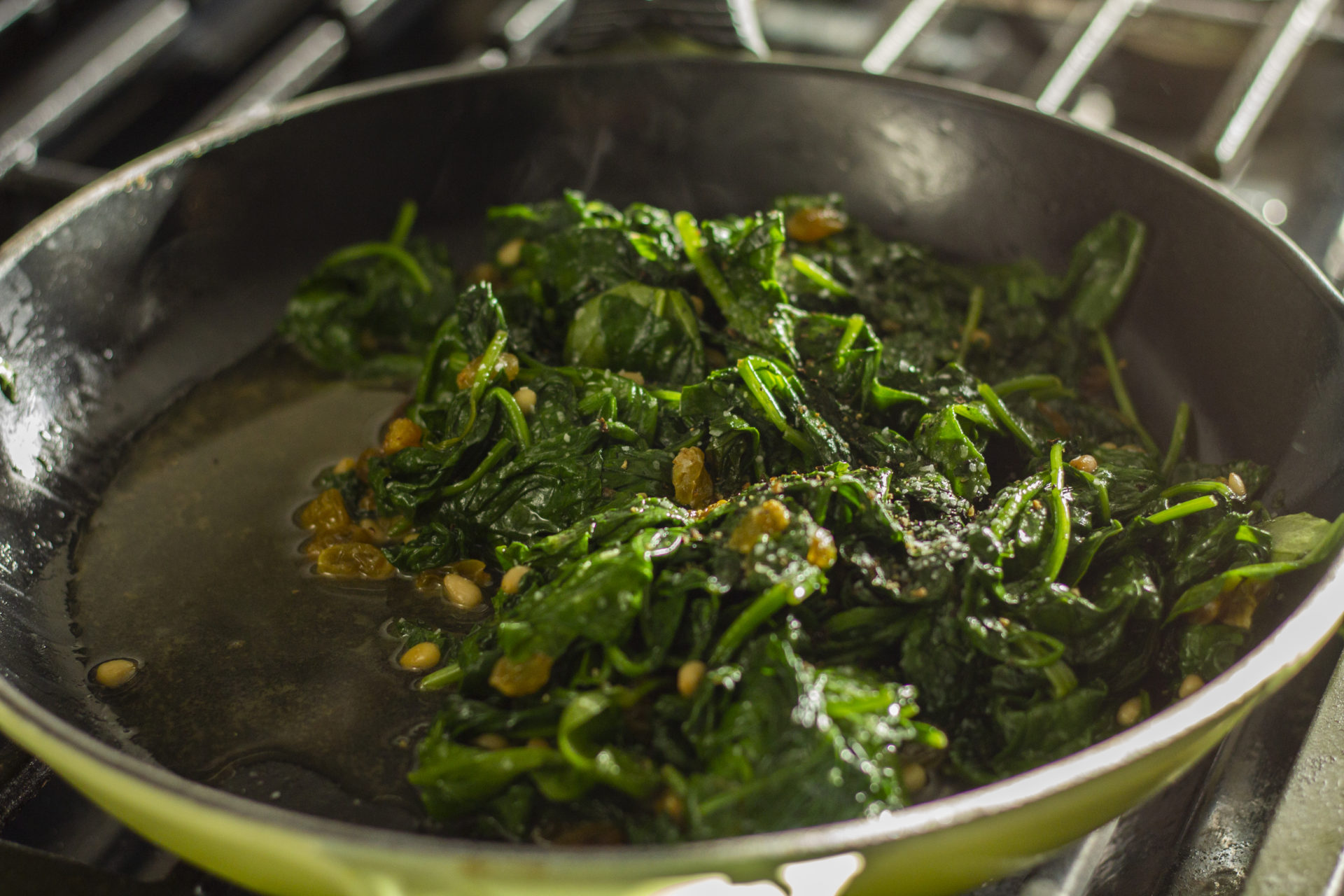
How to Make Italian Classics: Pasta Carbonara
Cucina con Luca!
I remember fondly sharing a pasta carbonara with one of my father’s friends. He was an American, and he’d never had or heard of the dish before. He was what you’d call a true stock blue-collar American, and I was a little nervous. After all, the Carbonara is refined, delicate, and peculiar–a dish that may come as a shock to the classic American palette.
After taking a few bites, he exclaimed, “I could eat this bacon and egg pasta for the rest of my life!”
Many feel the same way.
While it may be helpful to explain the dish to someone who’s never experienced it before, the Carbonara shares few similarities with a plate of bacon and eggs. If you’re looking down at a plate of spaghetti with what looks like scrambled eggs, you’ve gone wrong somewhere, either cooking the eggs for too long or not stirring thoroughly enough while the eggs were cooking. The eggs are meant to come together in a creamy, somewhat viscous sauce.
Since the original recipe, there have been countless variations on the traditional Carbonara. Today, I’m sharing the original with you. I hope you enjoy.
La Pasta Carbonara
You Will Need:
Pecorino Romano
Black Pepper
Eggs (I like to use the rule of thumb, one egg per person eating and an additional egg to be safe)
Spaghetti (I used 250 g if there are two people eating, 500 g for 3-5, and so on)
Pancetta (How much is a question of preference. I should also say, that bacon and pancetta aren’t quite the same thing. Bacon is typically smoked. Pancetta is salt-cured and dried.)
Olive Oil
Putting it Together:
- Start by grating a healthy amount of Pecorino Romano into a medium-sized bowl. Fill the bowl about halfway. The amount of pecorino you use will be a question of taste, but it’s one of the few ingredients to the sauce. You’ll want enough to treat it like an ingredient, not a garnish.
- Season the cheese with a generous amount of black pepper.
- Separate the egg yolks from the whites, and add the egg yolks to the cheese and pepper mix it all together.
- In the meantime, get a large pot of salted water boiling and start cooking your spaghetti.
- Slice your pancetta into thin strips or into very small cubes. Cook them in a pan over medium heat with a kiss of olive oil.
- Remove a cup’s worth of the pasta’s cooking liquid and set aside. Drain the rest of the pasta.
- When the pancetta starts to get crispy, add your cooked spaghetti to the pan. If you only have a small pan, you can add the spaghetti and the pancetta back into the pot you boiled the spaghetti in. If you do this, make sure you add another kiss of olive oil to the pot beforehand.
- Turn up the temperature on the pot and stir the pasta and the pancetta around to keep it from burning or sticking. If your pasta starts to dry out, add some of the cooking liquid. Your goal is to get the pasta itself quite hot. This process usually takes around a minute.
- Once the pasta is nice and hot, turn down the burner to low heat, and remove the pan or pot from the fire altogether.
- Add your pecorino and egg mixture into the pot and stir vigorously. Be careful not to let the egg come in contact with the edges of the pan or pot. Instead, you want to use the heat of the noodles to cook the egg yolks. The constant stirring will ensure the egg doesn’t clump together and coagulate as it cooks. Instead, you’ll mix it well with the oils from the pancetta and the melted cheese to form and smooth, creamy sauce.
- If necessary, put the pot back on the burner on low heat for a little bit while you keep stirring, being quite careful not to heat the pan or pot enough to solidify your eggs at all.
- Dish out onto a plate, sprinkle with some Pecorino Romano, and serve immediately.
There’s nothing quite like a well composed Carbonara. Buon appetito! Maybe you’ll be eating this bacon and egg pasta for the rest of your life 😉
Luca
P.S. If you liked this recipe, be sure to check out my cookbooks!



